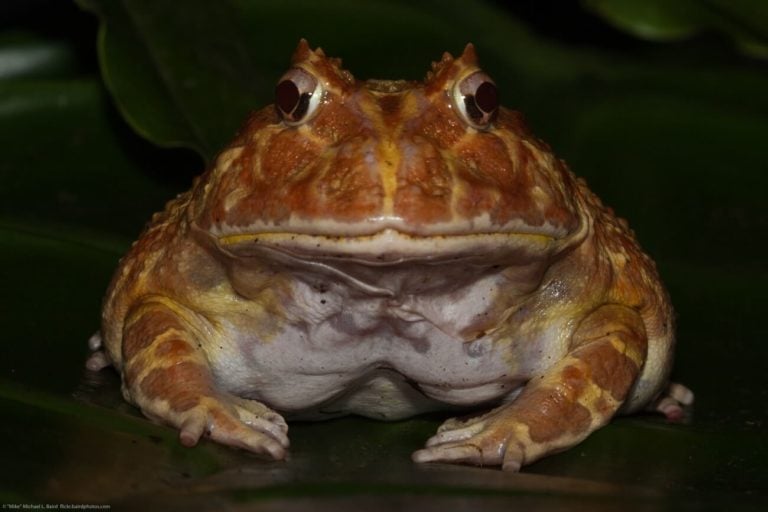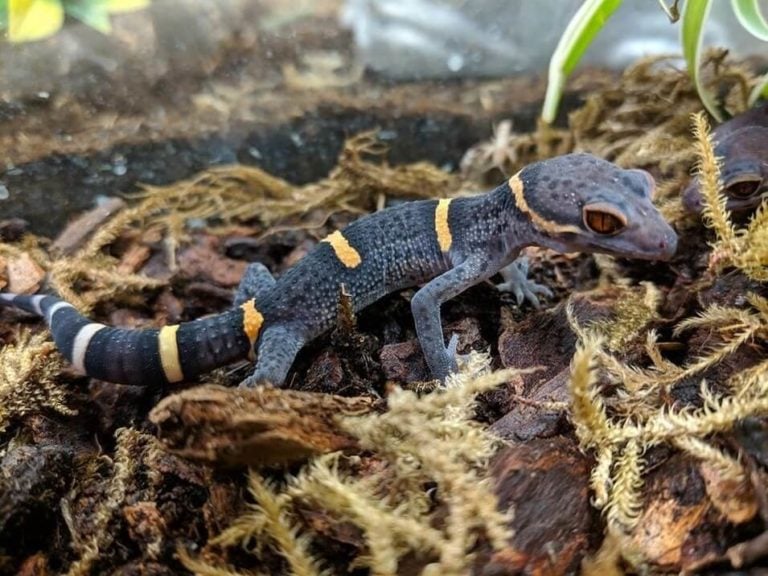Sailfin dragons are impressive looking lizards that have interested reptile owners for many years. Their prehistoric appearance is something you can’t find in many other species!
But if you’re keen on owning one as a pet, there are some things you’ll need to know first. These lizards required a fair amount of knowledge and commitment in order to be kept in captivity.
This guide will cover everything you’ll need to know about sailfin dragon care. You’ll learn about their enclosure setup, size, diet, temperament, and more!
Table of Contents
Species Summary
The sailfin dragon (Hydrosaurus) is one of the closest things herpetology enthusiasts can get to a prehistoric-era pet! With its dinosaur-like looks and unique physical features, it’s a favorite for those looking for a distinct pet.
There are three identified species within the Hydrosaurus genus. Native to the Philippines, Indonesia, and New Guinea, these species are similar. But, they can vary quite a bit in terms of size and appearance.
These lizards, while still popular, aren’t as prevalent today as they were in the 1980s and 1990s. The Philippines stopped exports, resulting in less availability in the pet trade. Luckily, breeders are helping to bridge the gap and meet the demand of reptile fans around the globe.
Expert Tip: Sailfin dragons aren’t for the faint of heart. With their large size and strict habitat requirements, they are best for those with experience caring for large lizards.
Appearance & Colors
At first glance, sailfins look very similar to other big lizard species. They feature a girthy body, agile legs with elongated toes, and a long tail.
However, a few more standout features make this lizard easy to identify.
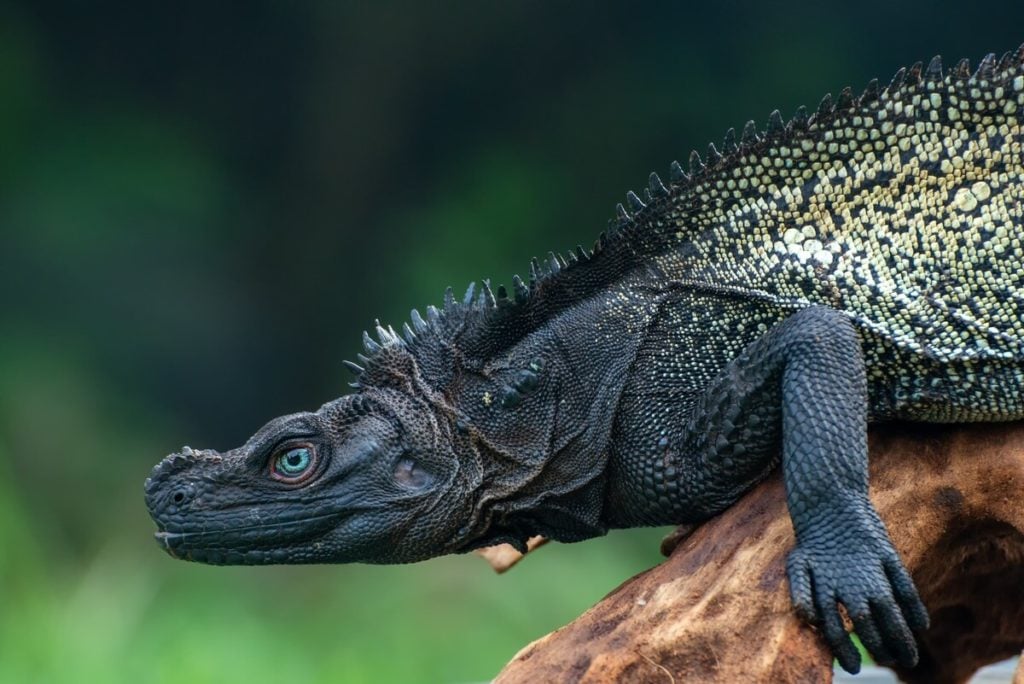
Both males and females are sporting a well-defined crest. It’s usually on the back of the head and may extend down the neck. They also have spiky scales that start at the nape of the neck and stretch down to the back.
Males are the ones with the signature sail. The expansive fan-like sail has sturdy rays that help it stand up on command. The tallest part of the sail is usually on the base of the tail. Though, it can run pretty far along the prehensile tail on some specimens.
Expert Tip: The sail isn’t just for show. It also helps with agility as they climb trees and provides some extra power when swimming.
When it comes to color, there’s a lot of variety with sailfin dragons. Most are green and gray. Mottled coloration provides a beautiful look while helping to create some natural camouflage.
More exotic colors exist, too. You might see lizards with shades of brown, black, or reddish rust. Accents of blue around the legs, chest, and face are common as well.
Lifespan
This is a long-lived species. In captivity, the average sailfin dragon lifespan is around 25 years or so.
Of course, there are no guarantees when it comes to life expectancy. As with any other reptile, sailfin dragons rely on high-quality husbandry to stay healthy.
Those with a top-notch habitat and nutrient-rich diet are more likely to live the longest. On the other hand, those with inferior care can experience disease and early death.
Average Size
These lizards are massive! The size of an adult sailfin dragon can easily reach three feet or more. Exact sizing will vary a bit based on the subspecies.
The biggest are Philippine sailfins (Hydrosaurus pustulatus) and Indonesian Giants (H. amboinensis). Average adults usually make it to about three and a half feet long (but they sometimes can get closer to four feet).
The Weber’s sailfin (H. ”weberi”) is slightly smaller, maxing out at a little more than three feet.
Expert Tip: Male lizards are always bigger than females. Female specimens are often about 33 percent smaller than their male counterparts. But even still, they are much larger than most other pet lizard species!
Sailfin Dragon Care
Sailfin dragon care can be a bit of a challenge at times. The sheer size of these lizards can put a wrench in the plans for many reptile enthusiasts. However, those who have the space and means to meet their distinct needs should have no problem.
Proper sailfin dragon care is about creating the right habitat, optimal environmental conditions, and providing a superb diet. Here are some important care guidelines to help you with your sailfin dragon journey!
Enclosure Size
Let’s start with the enclosure. Younger lizards that are 16 inches long or smaller can get by in a 30 to 50-gallon terrarium. You can use any standard lizard aquarium as long as it’s secure and spacious.
But once your reptile gets bigger, building a custom enclosure is a must.
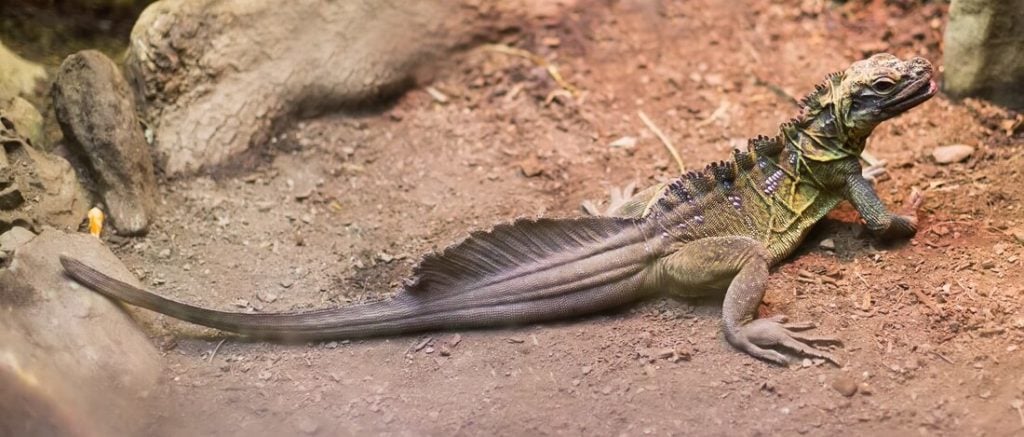
Adult dragons will need a large habitat that’s at least five feet long, two and a half feet wide, and five feet tall. That should be enough to accommodate one adult lizard.
If you have the room, try to go a bit bigger! Length and width measurements of six feet and three feet, respectively, can be an even better home for larger lizards.
When building the enclosure, you also need to consider the lizard’s habits! Use a solid material on the sides and back of the enclosure to block their view. Sailfin dragons are notoriously flighty, so controlling their view of the surrounding area is important.
Expert Tip: It’s also a good idea to add a perimeter of solid material on the bottom of the enclosure, too. A 12 inch tall footer will prevent the lizard from getting injured as they rub against the walls. The front-facing wall and ceiling can be made of screen mesh for proper ventilation.
Setting Up Their Habitat
Inside your lizard’s new home, you need to create an environment that simulates their natural habitat. Sailfin dragons come from humid tropical locales and often live near mountain streams. An arboreal species, they also require plenty of climbing spaces.
Start with a moisture-absorbing substrate. One of the best choices for sailfin dragons is cypress mulch. It’s safe, easy to clean, and holds onto moisture well to help with humidity levels. You can also throw some sphagnum moss into the mix.
Some owners like to use a mixture of fertilizer-free potting soil, play sand, and coconut fiber. This substrate mix can work well. But, the fine particles can get stuck around the eyes. To be on the safe side, go for a substrate that’s bigger and safer.
Next, add a series of branches. They should run both horizontally and diagonally to give your lizard as many routes to climb as possible. Use varying thicknesses for branches. But, make sure each piece is at least as thick as the lizard to ensure that it can support them.
Arrange the branches so that they don’t touch too much. Direct branch-to-branch contact could cause pinching and injuries.
Expert Tip: You can also add some built-in climbing shelves towards the top of the enclosure for some additional climbing areas.
The next thing you’ll need is foliage. Use real or artificial plants to create some natural cover towards the bottom of the enclosure. Don’t overdo things. The plant should provide ample hiding space while still leaving some open room to walk around.
A hide box is a good accessory to have as well. Most lizards will get more comfortable the longer they live in the enclosure. However, having an ultra-secure spot to hide out in is always a good thing.
Temperature & Lighting
Like most reptiles, sailfin dragons thermoregulate. They move to different temperature zones to manage their body temperature accordingly. To support this behavior, you need to create a temperature gradient using your lights.
The first step in creating that gradient is installing a basking light. The light should be high up above your lizard’s favorite branch. Make sure the light is outside of the enclosure and not touching anything. It will produce a lot of heat!
Here are the two primary temperatures to aim for:
- Set the basking light to create a hot area of around 115 degrees Fahrenheit. Some lizards may prefer basking spots up to 120 degrees!
- For the rest of the enclosure, ambient temperatures need to be between 80 and 90 degrees.
As a diurnal species, sailfin dragons need a standard day and night cycle. Set your lights to go off at night. You can install a red lamp if you need to keep an eye on your lizard.
Expert Tip: Nighttime temperatures can drop as low as 75 degrees Fahrenheit. Anything less than that and you’ll need to use heat strips or emitters.
The final lighting requirement is a UVB lamp. A full-spectrum UV light simulates the sun’s rays. It’s a crucial addition, as your lizard needs UV exposure to properly synthesize calcium in the body.
Install the light above the enclosure so that it shines on most of the habitat. Set it on a timer like your normal lamps, and don’t forget to swap out the bulbs every six months or so!
Humidity
Hot and humid weather is absolutely essential for sailfin dragons! They come from very humid environments, so you need to recreate that mugginess in their habitat. Humidity levels should be around 75 to 80 percent in the enclosure at all times.
If you need to raise the humidity, mist the enclosure daily. The substrate and plants will soak up the water and maintain the humidity. You can also install an automatic mister or drip system.
Expert Tip: Invest in a reliable and accurate hygrometer! This will give you confidence in your readings, and allow you to make adjustments when necessary.
Water
Sailfin dragons live by the water in the wild, and need access to clean water inside their enclosure at all times.
Place a large pan of fresh water at the bottom of the enclosure. It should be big enough for the lizard to get in for a soak!
Make sure to clean the pan and replenish the water to prevent bacteria and disease. Most sailfin dragons will use it to drink out of and defecate in. As a result, daily cleanings are a must.
Sailfin Dragon Food & Diet
The exact diet of wild sailfin dragons is still a mystery. However, most experts can agree that a varied diet in captivity is key to good health. These reptiles are omnivores, so they require everything from protein-filled animals to fruits and vegetables.
Here are some good food options to include in their diet:
- Crickets
- Cockroaches
- Earthworms
- Superworms
- Feeder mice
- Small crustaceans
- Clean fish
- Kale
- Dandelion greens
- Squash
- Carrots
- Bananas
- Berries
That’s just a small collection of suitable foods. These lizards will eat pretty much anything they can get their hands on!
Make sure that all insects are properly gut-loaded and cleaned before feeding. To ensure that they’re getting all of their vitamins and nutrients, dust them with supplement powders about three times a week. Use a multivitamin supplement and calcium powder.
Usually, feeding sailfin dragons every other day is best. However, it all depends on the types of meals you provide and the age of your lizard. Younger lizards will want to eat more frequently.
Expert Tip: Keep their diet interesting! You can utilize commercial lizard foods for simplicity, but always try new foods to provide as much variety as possible.
Possible Health Issues
Sailfin dragons can suffer from all of the same health problems as smaller lizards. They’re susceptible to issues like respiratory infections, bacterial skin infections, and more. Thankfully, most problems are easily avoidable with proper care enclosure maintenance.
Stay on top of the environmental conditions and spot clean messes as soon as possible, and disinfect surfaces about once a month. This will make a huge impact on their overall comfort and health.
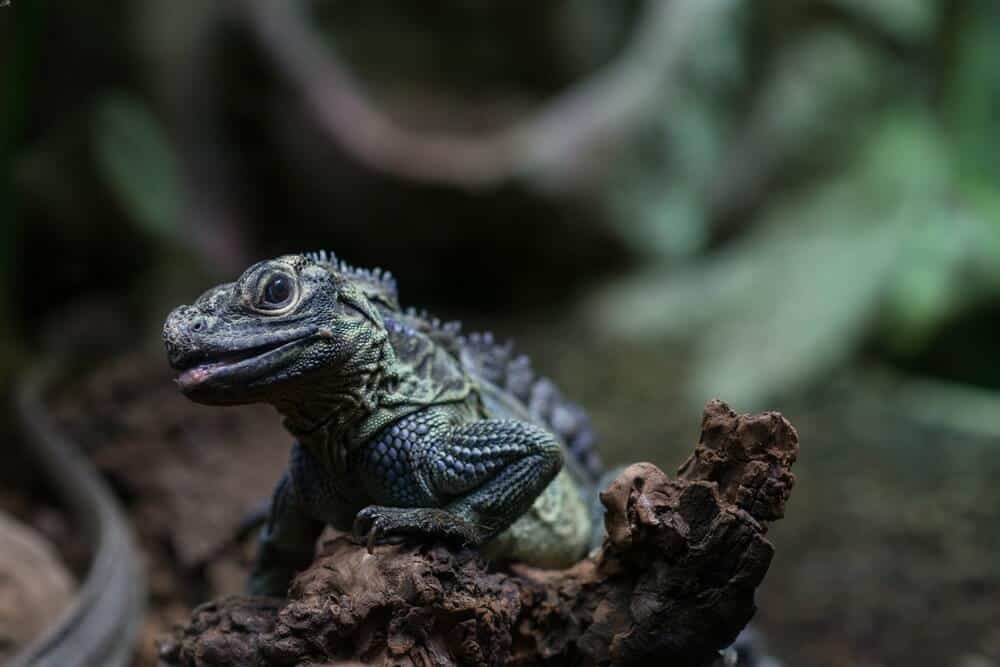
Sailfin dragons are also at risk of experiencing physical injuries. As we mentioned earlier, finer substrate particles are notorious for getting stuck around the eyes. This can lead to ocular problems and infections.
These lizards also have a knack for rubbing their snouts on walls and solid surfaces. Make sure to install a tall footer along the bottom of the enclosure to ensure that they’re not rubbing on sharp wire mesh.
Finally, the last thing to be wary of is internal parasites and diseases. These are common with wild-caught exports. They can easily spread to other pets and humans, so make sure to visit a vet and perform any recommended quarantining procedures.
Behavior & Temperament
Despite their somewhat intimidating looks, sailfin dragons are very jumpy! In the wild, they immediately flee to water at the first sign of potential danger. They run on their hind legs until they sink below the surface. Then, they swim to get away!
In captivity, that escape plan is not possible. But that won’t stop them from trying!
These lizards will look for an escape route, so make sure that the enclosure is under lock and key. Also, try to keep any pets away from the habitat. Your sailfin dragon will go into hiding at the first sight of a potential intruder.
Fortunately, sailfin dragons will get more comfortable with time. However, it can take several years to get there. Give them plenty of hiding spots inside their enclosure to ease the transition to their new home.
Aside from some anxious behavior, sailfin dragons are pretty easy-going.
They can even coexist with others, but you have to be careful about the arrangement. You should never keep two males together. They are far too territorial to share the space.
Expert Tip: Male/female and female/female pairs work well. You can also keep one male with two females. Whatever you do, always keep an eye on their behavior. All lizards are different, so you should be prepared to separate them if any aggression occurs.
Handling Them
As you can probably guess, sailfin dragons aren’t super keen on handling.
In the beginning, most will not accept it at all. Expect scratching and tailwhips! While intense, this behavior is usually not caused by aggression. Any wriggling they try to do is more about fearful escape than anything else.
That said, some will open up to handling as they get more comfortable in their home. Move slowly around them and get them used to your presence.
Be patient! You must earn their trust before they will let you handle them.
If you get to that point, always scoop them up and support their body with your hands. Never chase them around or try to “catch” them. It will only teach them to fear you!
Be gentle and take things slow. It may take years, but if you do things right, your sailfin dragon may learn to accept handling.
Conclusion
Sailfin dragon care isn’t for everyone. These massive lizards require a decent amount of attention and a large enclosure to be kept successfully.
But if that’s not an issue for you, we highly recommend this species. Owning these reptiles can be both rewarding and awe-inspiring. You’ll spend countless hours simply observing them!
Let us know if you have lingering questions that weren’t answered in this care sheet. We’re always happy to help.

